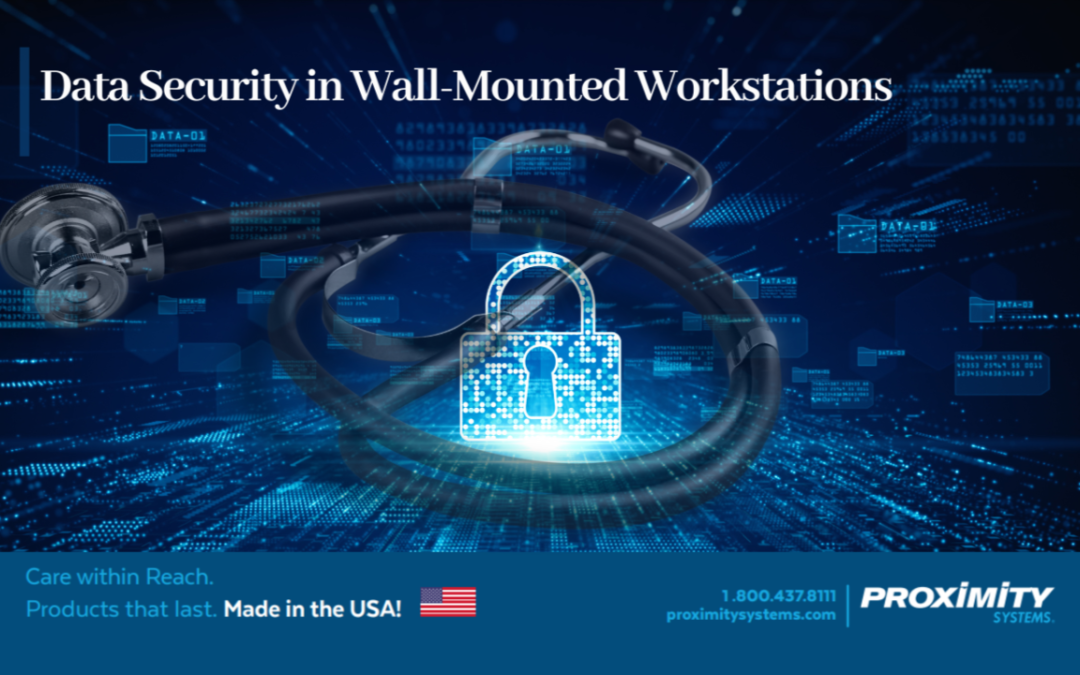📌The Critical Intersection of Data Access and Protection
In today’s digital healthcare landscape, patient data is more than just information—it’s a lifeline. Wall-mounted workstations are a staple in modern medical environments, giving providers real-time access to Electronic Health Records (EHRs) right where care is delivered. But with that access comes a significant responsibility: protecting sensitive data while keeping it available to those who need it most.
Healthcare IT professionals and clinical managers alike are facing a tightrope walk—how do you maintain tight data security without slowing down patient care? This article dives into that very challenge and presents 7 proven strategies to enhance data security within wall-mounted workstations—without compromising workflow.
🏥 Why Wall-Mounted Workstations Are the Norm in Healthcare Settings
Space Efficiency and Clinical Accessibility
Wall-mounted workstations solve a major space constraint in healthcare design. Their compact form makes them ideal for tight corridors, patient rooms, and nursing stations. The convenience of having EHR access within reach empowers clinicians to deliver efficient and accurate care.
Role in Workflow Optimization
By positioning technology at the point of care, these workstations reduce the back-and-forth associated with shared terminals. Clinicians save time, which in turn reduces fatigue and increases patient-facing minutes—a win-win.
⚠️ Understanding the Risk: Why Data Security is a Major Concern
HIPAA and Patient Data Vulnerabilities
Healthcare breaches aren’t just costly—they’re dangerous. A misplaced login, an unlocked screen, or an unsecured network can result in millions of dollars in penalties and a loss of trust.
Human Error and Device Misuse
Even the best technology can be undermined by simple mistakes: walking away without logging out, sharing passwords, or using unsecured personal devices. Physical access equals data access—unless you design smart.
🔐 Top 7 Strategies to Strengthen Data Security
1. User Authentication and Role-Based Access Controls
Implementing unique logins and biometric authentication ensures that only authorized users can access specific information. Systems should automatically limit access based on a user’s role—no more, no less.
2. Auto-Locking Cabinet Designs
Wall-mounted workstations with auto-locking doors prevent unauthorized physical access when idle. This is especially important in high-traffic areas like ERs or waiting rooms.
3. Secure, Encrypted Network Connections
Data encryption—both in transit and at rest—should be the standard. VPNs and secure Wi-Fi protocols help ensure that data can’t be intercepted or tampered with.
4. Physical Safeguards and Tamper-Resistant Features
Tamper-proof screws, hidden cable routing, and secure hinges reduce the risk of theft or hardware modification.
5. Regular Security Audits and Staff Training
Security is not a one-time checklist. Routine audits, combined with mandatory cybersecurity training, keep your team alert and informed.
6. Real-Time Monitoring and Audit Trails
Tracking who accessed what, when, and where adds a layer of accountability. Anomalous behavior can be flagged and investigated immediately.
7. Integration with Hospital Information Systems (HIS)
Seamless integration reduces the risk of data silos and manual errors. When systems communicate, compliance becomes easier to manage.
⚖️ The Balance: Accessibility Without Compromising Security
Designing for Nurse Efficiency
A secure system that’s hard to use will be bypassed. That’s why it’s critical to involve end-users—nurses, doctors, administrators—in the design and feedback loop. A balance of secure access and intuitive interfaces supports both clinical and IT goals.
Smart Automation: When Security Works for You
Smart locks that detect user proximity, automatic logout features, and single sign-on (SSO) systems enhance usability while upholding strict security standards.
🛠️ Proximity Systems’ Approach to Secure Workstations
Built-In Security Mechanisms
Proximity Systems’ wall-mounted workstations are designed with integrated locking mechanisms, concealed cable management, and custom compartments to prevent tampering or misuse.
Custom Solutions Based on Facility Needs
From pediatric clinics to behavioral health centers, security needs differ. Proximity Systems offers configurable solutions that align with your specific data protection and workflow requirements.
❓ FAQs
1. Are wall-mounted workstations HIPAA compliant?
Yes, when properly implemented with secure access controls, encryption, and physical safeguards.
2. Can these workstations support biometric login systems?
Absolutely. Many modern units can integrate with fingerprint scanners or facial recognition.
3. What happens if a clinician forgets to log out?
Auto-timeout features and real-time monitoring can log out inactive users automatically.
4. Is it safe to use these in public-facing areas?
Yes, provided those lockable enclosures, screen filters, and access controls are in place.
5. How often should we audit workstation security?
Quarterly audits are recommended, with additional reviews after system updates or incidents.
6. Can Proximity Systems customize security features per department?
Yes. Solutions can be tailored by location, user role, and departmental workflow.
✅ Conclusion: The Future of Healthcare Security Through Design
Data security and efficient access aren’t mutually exclusive. With the right strategy and design, healthcare providers can confidently protect sensitive information—without disrupting patient care. Wall-mounted workstations are more than just furniture; they’re critical infrastructure for safe, modern healthcare.
Looking for a secure, scalable, and smart solution? Explore Proximity Systems’ Secure Workstations ➡️
